How SolForge Will Set The Video Card Game World Alight
Ascension developer Stoneblade Entertainment brings accessibility, convenience, and Pro Tour know-how to the recent electronic TCG movement with SolForge.
This article first appeared on USgamer, a partner publication of VG247. Some content, such as this article, has been migrated to VG247 for posterity after USgamer's closure - but it has not been edited or further vetted by the VG247 team.
Like many, I absolutely adore Ascension: Chronicle of the Godslayer, the popular deck-building game that made a splash with video gamers thanks to the much-lauded iOS version. In fact, it's become my go-to time waster whenever I need to kill a few minutes. At the end of the day, though, it's a card game ported to digital devices, one I remember falling for at my local tabletop gaming store well before I was even aware of an iOS version. But what if a card game could be built from the ground up as a video game, fully exploiting every advantage the medium has to offer?
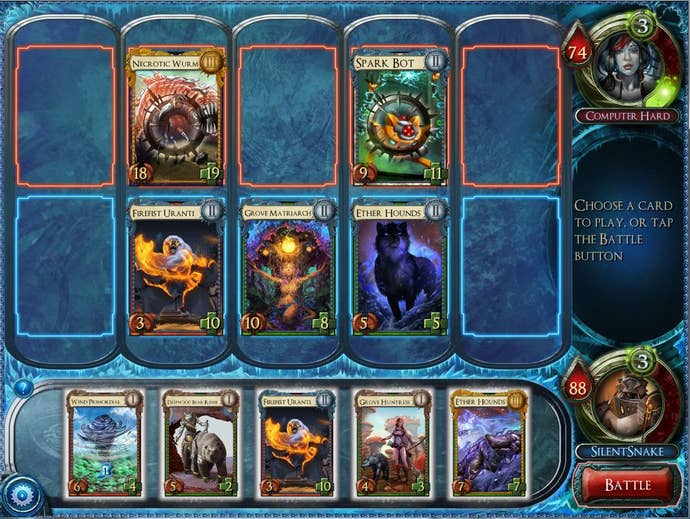
We've seen plenty of attempts already this year – including USGamer favorite Hearthstone: Heroes of Warcraft – but none boast the pedigree of SolForge, the newest card game from the makers of Ascension. Unlike the rest of the field, developer Stoneblade Entertainment's notable names are unfamiliar to the video game industry, but ubiquitous to anyone who pays attention to competitive Magic: The Gathering – Pro Tour mainstays Justin Gary, Patrick Sullivan, and Hall of Famer Brian Kibler play key roles in Stoneblade's development team, public relations, and community management – as well as design input from Magic: The Gathering creator Richard Garfield himself. This plays a big role in the output of the company, with SolForge being the game most similar to the ones they spent their lives immersed in. “A big goal of ours was creating a game that we would want to play,” says Brian. “We’re lifelong gamers, and competitive gamers at that. We wanted to make a game that we could see ourselves getting immersed in like we have with many of our other favorite games over the years.”
The influence of Magic is certainly felt once you dig into the game. Players start at one hundred life and must reduce their opponent's total to zero using a combination of Creatures and Spells. But don't mistake it for being a derivative work, as its differences manage to create an experience all its own. You cannot simply play Creatures and declare attackers and blockers here. Instead, each side of the battlefield holds five slots where Creature cards can be played. Both players' forces must attack each turn except for the ones that just came into the battlefield this turn. If a Creature is unimpeded by an opposing one opposite it, damage equal to its Attack is dealt to the opponent. Otherwise, they trade damage. This dynamic makes positioning matter, especially given you can't move creatures once you've placed them unless they have an ability called Mobility. Some Creatures also grant buffs and other special abilities to adjacent friendly Creatures, or get additional powers when placed in a certain lane. Giving the battlefield a spacial element opens up new dimensions of tactical strategy within a familiar shell.
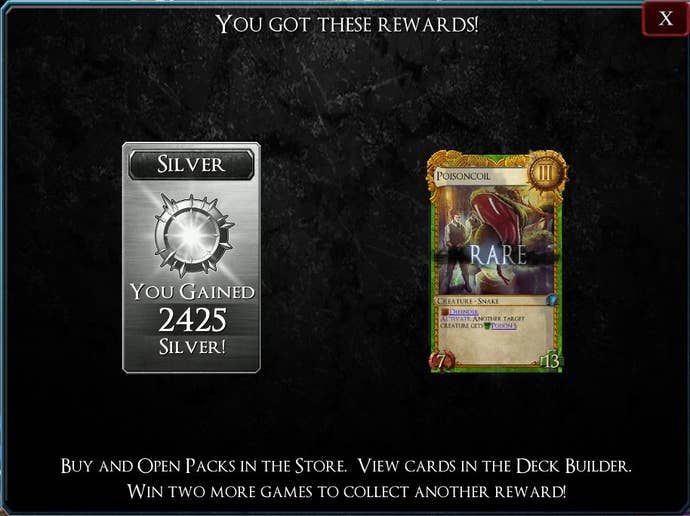
Playing the cards themselves plays out much differently, however. Unlike Magic and its ilk, no card requires a resource cost to play. Instead, you may play two cards from your hand per turn before being forced to discard your hand, draw a new one, and pass to your opponent. Not having to worry about mana analogues streamlines the experience immensely, creating a more accessible game. But cannier players will realize that “cost” still exists. Justin explains: “Your “cost” of playing cards is based on their power at each level. For example, cards that are good at Level 1 are typically worse at Level 3 and vice-versa. This allows advance players to make resource trade-offs by choosing which cards to play when and considering the impact on the early, middle, and late game.” Thanks to this trick, Stoneblade pulls off the rare game where players of all skill levels can derive equal amounts of enjoyment. “I saw this in action at Gencon when we revealed the open beta. Advanced TCG players (and Pro Tour Champions) spend long minutes debating the value of their plays while right next to them, a five year old was dragging cards onto the board and having a blast.”
SolForge's true identity, however, can be found in its persistent mechanics that can't easily be replicated outside of a video game. Instead of needing to overcome a Creature's Health in one attack, any damage dealt remains even after a turn ends. “It primarily serves the purpose of preventing giant creatures from dominating the game,” explains Justin. “Even very large creatures can still be taken down by a series of smaller creatures if needed and helps players still make progress even with 'bad draws' and under leveled creatures.” This also serves a practical purpose, eliminating one of the major flaws with physical tabletop games. Though you certainly could keep track of damage with chits in a physical game, positioning SolForge as a video game cuts down on all the fussy bookkeeping. “Tracking damage is much easier in a digital game and provides for a lot of interesting gameplay options (e.g. healing, regeneration, etc.).”
Even harder to keep track of outside the digital world is the cards themselves, which transform as you play them. Every time you use a single card, it levels up into a more powerful version of itself to a maximum of Level 3. Your deck slowly improves over time as you progress into a game, a dynamic familiar to those who've played Ascension. “We’d actually been thinking of how to make leveling up work in a CCG when we realized the progression concept from Ascension – with your deck steadily getting more powerful as the game progressed – was really a perfect fit.” said Brian. “We experimented with a number of different ways to do it, like in some early iterations all of your cards immediately leveled up with you when you leveled up, and ultimately came to the version that we have now.” Just imagine how this sort of mechanic would be handled if SolForge was a physical game. In the newest expansion of Ascension, some cards transform under certain conditions. Transformation amounts to replacing a card in your deck with its corresponding upgraded version from the game box. But only a small handful of the cards transform. Now imagine if every single card transformed and required two evolved forms that would need to be continually swapped in. It's certainly possible to replicate as a physical game, but it threatens to be horrifically fiddly.
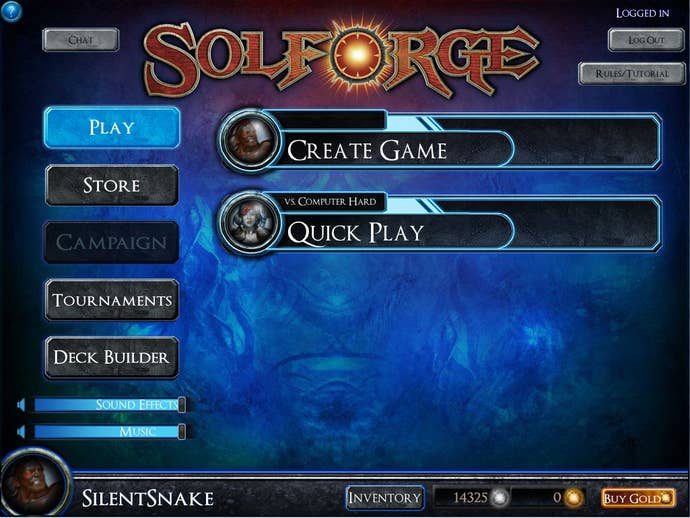
But then, breaking free of physical limitation was always the point behind SolForge, though according to Justin, it required some trade-offs. “This was a tough choice for us- of course, it would be great to make a game that could be both a physical and a digital game (like Ascension), but at the end of the day, that choice requires you to make sacrifices in gameplay that hurt the game in both formats.” Brian adds: “We wanted SolForge to feel like it’s at home on your PC or mobile device, not like it’s just a window over a tabletop where you might as well be playing instead.”
It also addresses the elephant in the room for the CCG genre: cost. Any time you ask players to actively take part in an eminently-expandable card game with random boosters and chase cards, you're requiring a hefty investment up front. Switching to purely digital gives Stoneblade more freedom when it comes to distribution and monetization. The fact that SolForge is free-to-play removes a very big barrier of entry for many would-be card-slingers. “We know SolForge is a lot of fun, so we just want to give as many people a chance to play it as possible,” says Brian. Anyone can build a sizable collection with enough hours put into the game, though if you really want to throw money at it, you can.
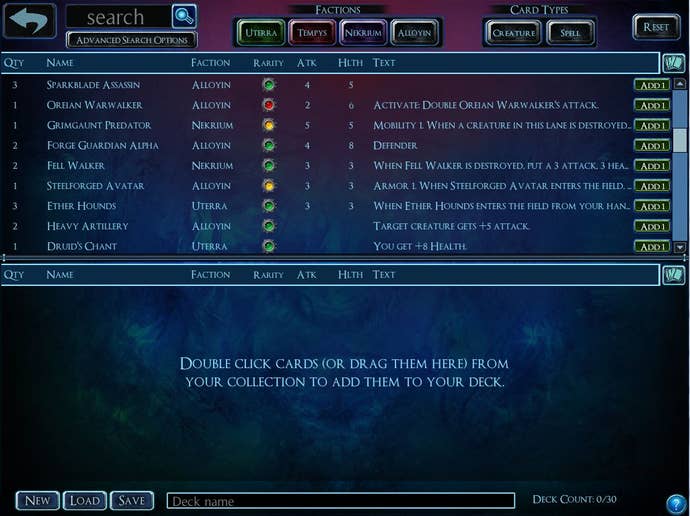
Quite possibly the biggest implication of this digital focus is the opportunities for organized play, which will place SolForge exactly where the creators want it to be: a competitive game. “We’re all competitive gamers at heart, and we know that organized play is crucial,” exclaims Brian. “We’ve spent a ton of time thinking about the best way to run things in SolForge, and what assumptions we can challenge from traditional games about how tournaments ought to be structured.” And what they've got planned is truly a massive rollout of formats and venues, from quick-play tournaments to large-scale in-person championships. Most exciting is the introduction of drafting, a format where you are given a grouping of cards, choose one of them, and past the rest to the person next to you, repeating the process until the end. You then use this pool of cards to spontaneously make a deck with. If you've ever tried drafting with Magic: The Gathering or a similar TCG, then you know how crazy fun it can be.
But this is just the beginning for SolForge as Stoneblade hope to carve out their own legacy through years of competitive know-how, aggressive continuing support of new content, and, most importantly, heralding the future of TCGs by embracing the digital age. Brian Kibler himself illustrates this future best: “I’ve already spent quite a bit of time drafting on my phone, whether while watching TV, lying in bed, or using the restroom. That kind of convenience combined with such a fun experience is just incredible, and I can’t wait for the world to have a chance to try it.”
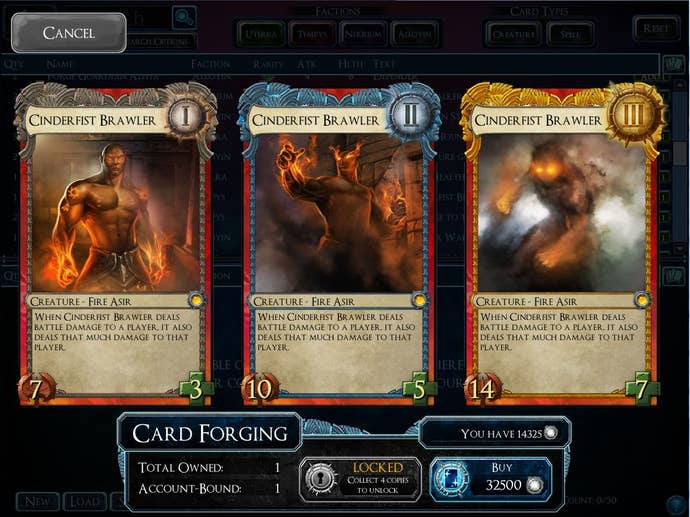
SolForge vs. Hearthstone
Given how devoted to Hearthstone USGamer is, it's only natural that we break down the similarities and differences between it and SolForge. As two prime examples of video card games, they both boast persistent stats for the cards (and in Hearthstone's case, the Heroes too). They also feature similar monetization models, with virtual currency earned through play or purchased with real money. And the general game language that both games speak is similar, like how players have life points that need to be reduced to zero, and standard card game creature stats like attack power and defense. The biggest difference with the cards is in their costs, as Hearthstone gives you constantly-scaling resources to pay the costs on cards, while SolForge cards have no costs or resources, but you have to use them to level them up. Still, anyone with experience with Magic: The Gathering can quickly pick up and understand either game.
It's the ways that the two games differ from Magic that truly set them apart from each other, and it's how they handle creatures and what their role is in the game. In Magic, you use creature cards to attack the opponent, but more significantly here, they can optionally block opposing creature's attacks. They serve as obstacles as much as threats. In Hearthstone, this aspect is lessened. You can completely ignore opposing minions provided they don't have Taunt, making “blocking” more of a rarity and less of a constant consideration. SolForge, however, takes the opposite approach and evolves the concept of blocking by adding the positioning mechanic. This way, creatures become obstacles as a matter of course. This difference gives each game a distinct feel, but SolForge's take feels more like something truly different and full of potential for new gameplay wrinkles. Both are absolutely quality games, however, and like all CCGs, you should try each to determine which one will resonate with. Luckily, that's not hard thanks to their free-to-play nature.

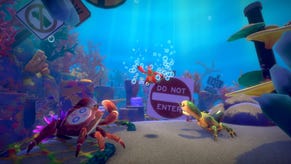
.jpg?width=291&height=164&fit=crop&quality=80&format=jpg&auto=webp)





